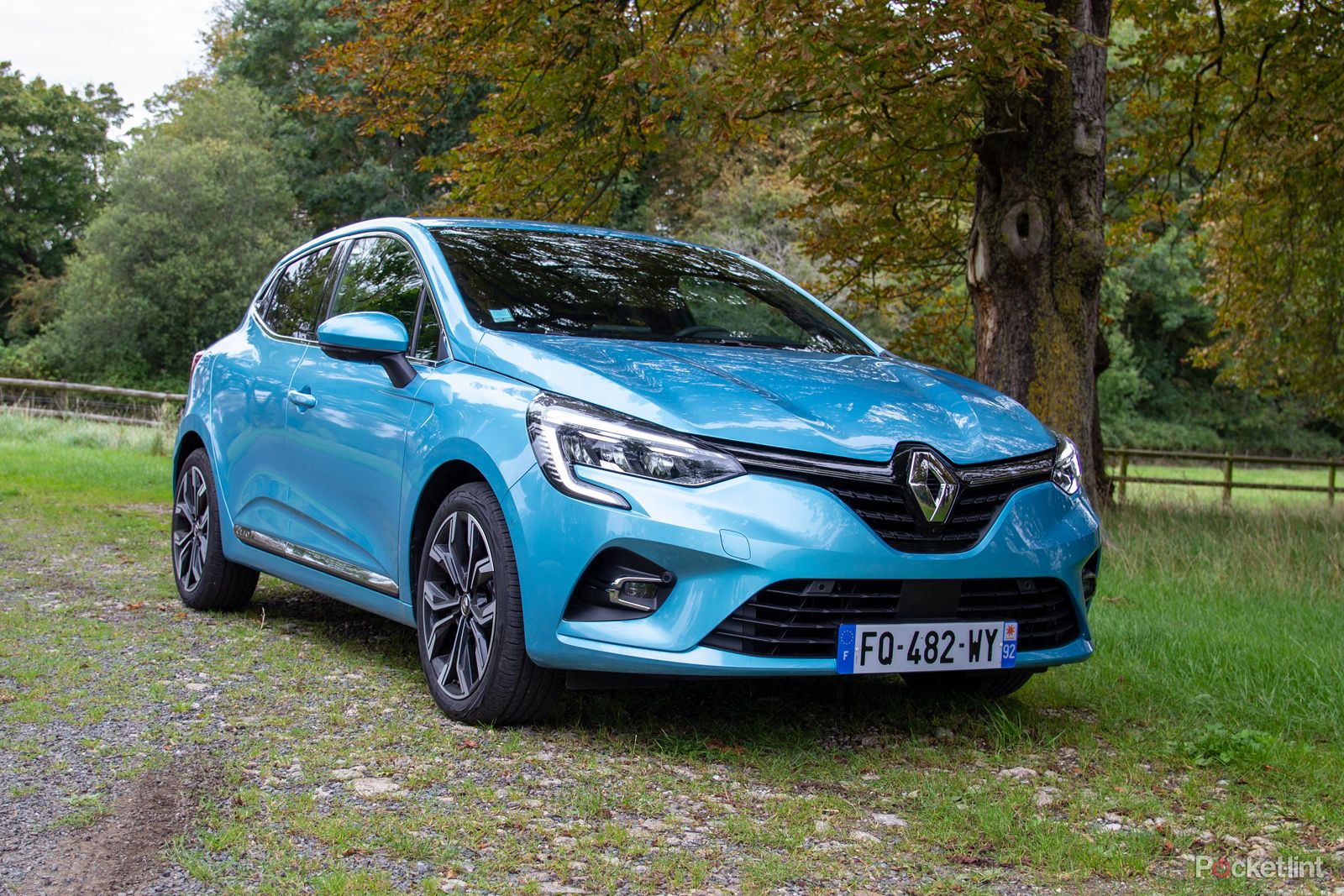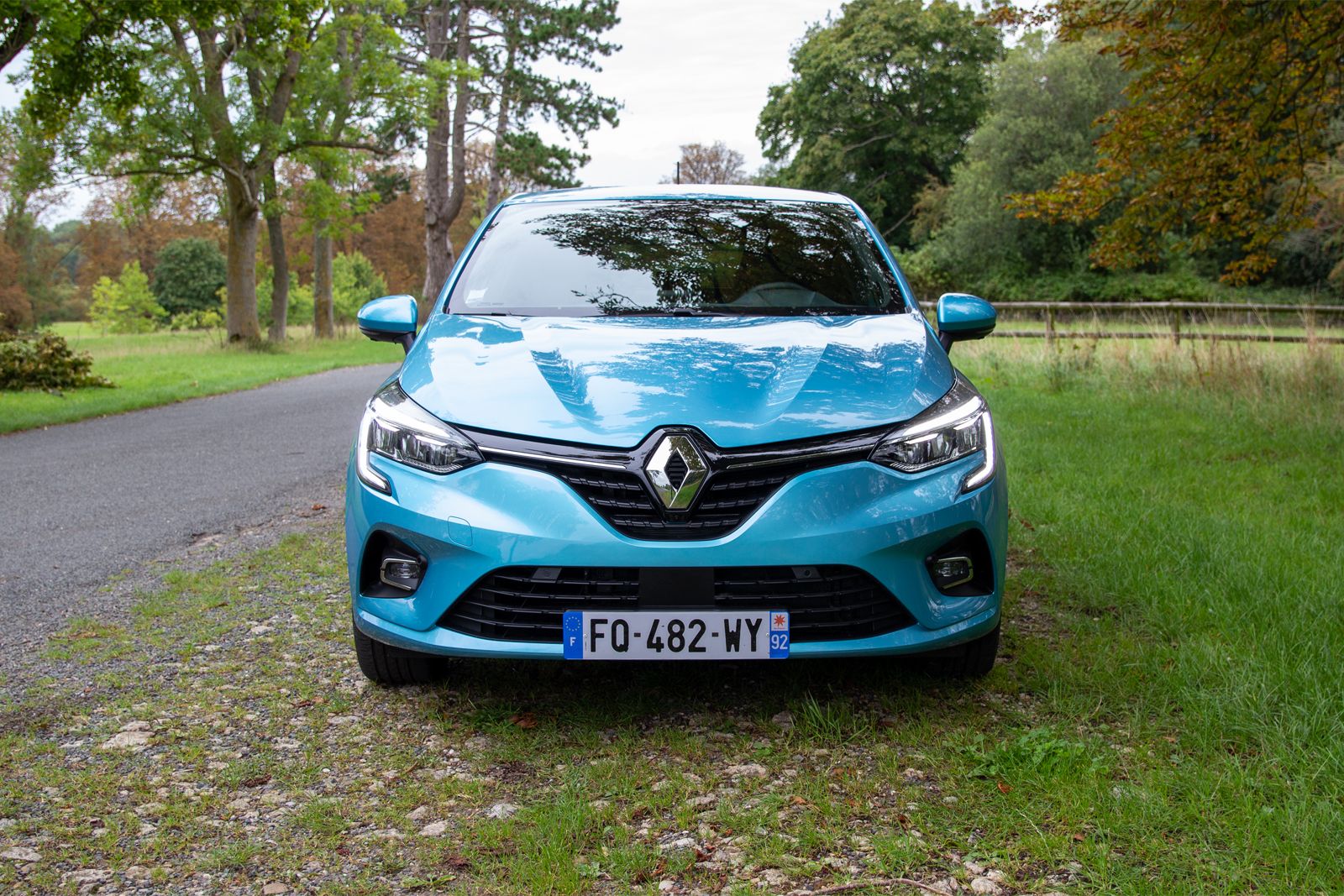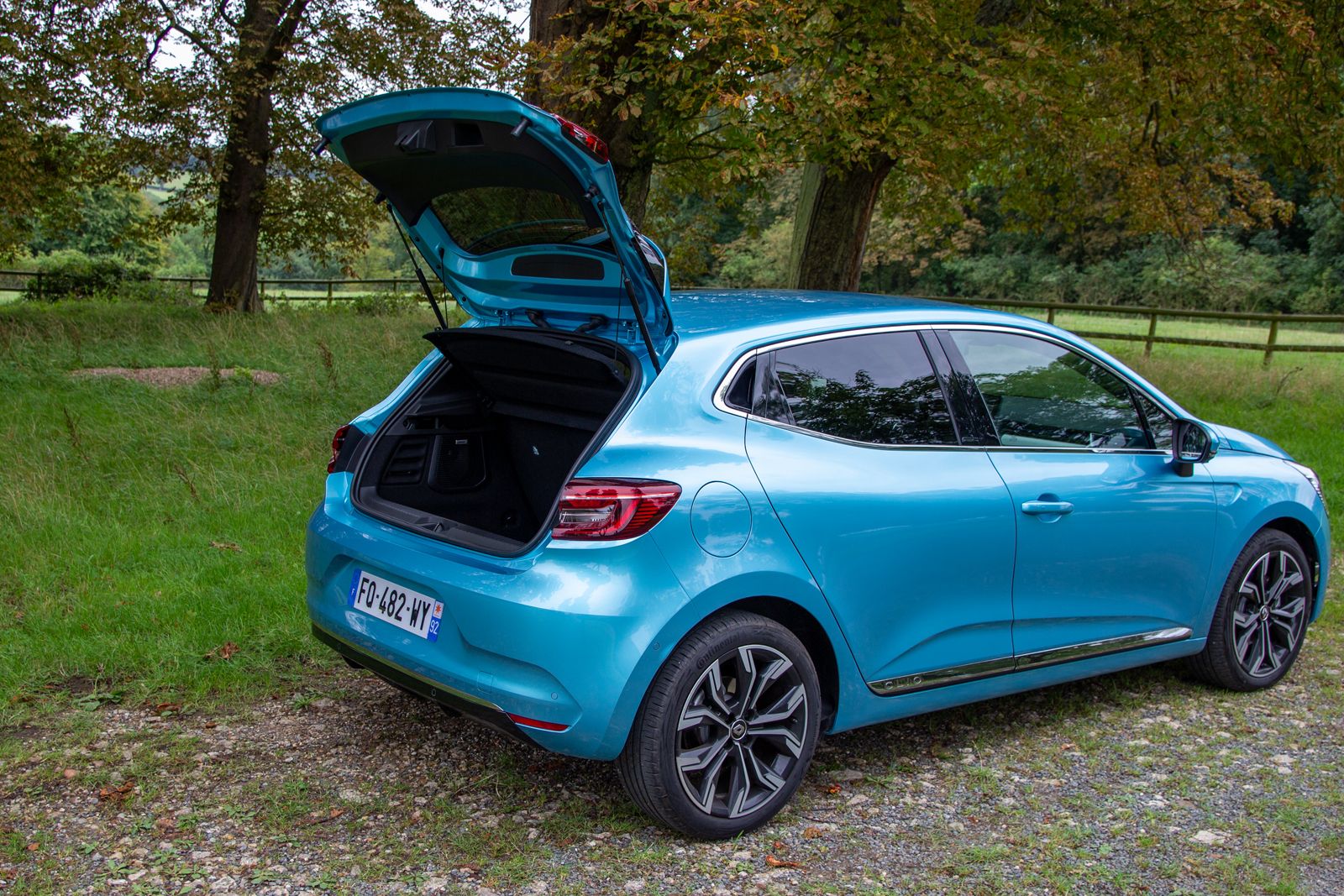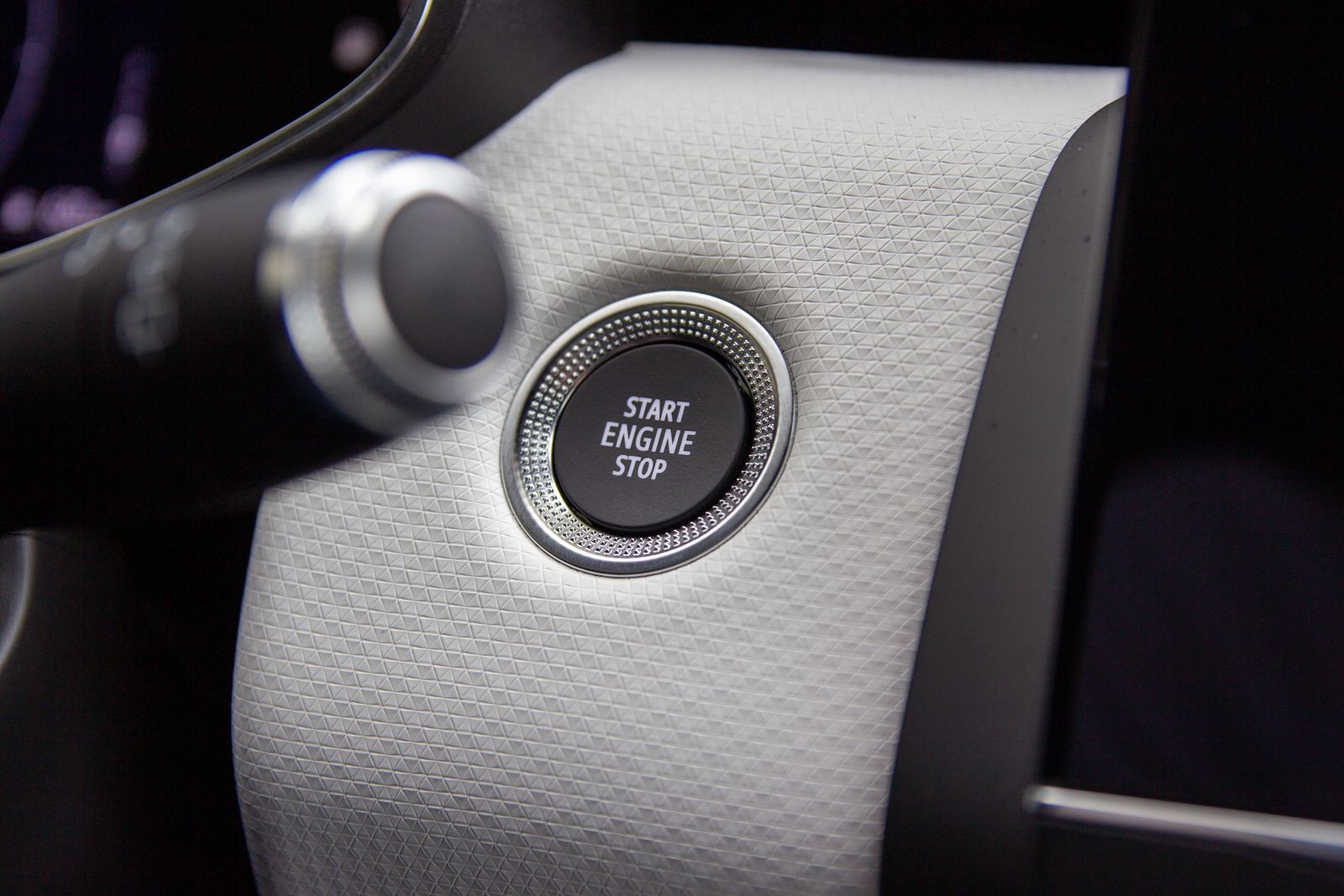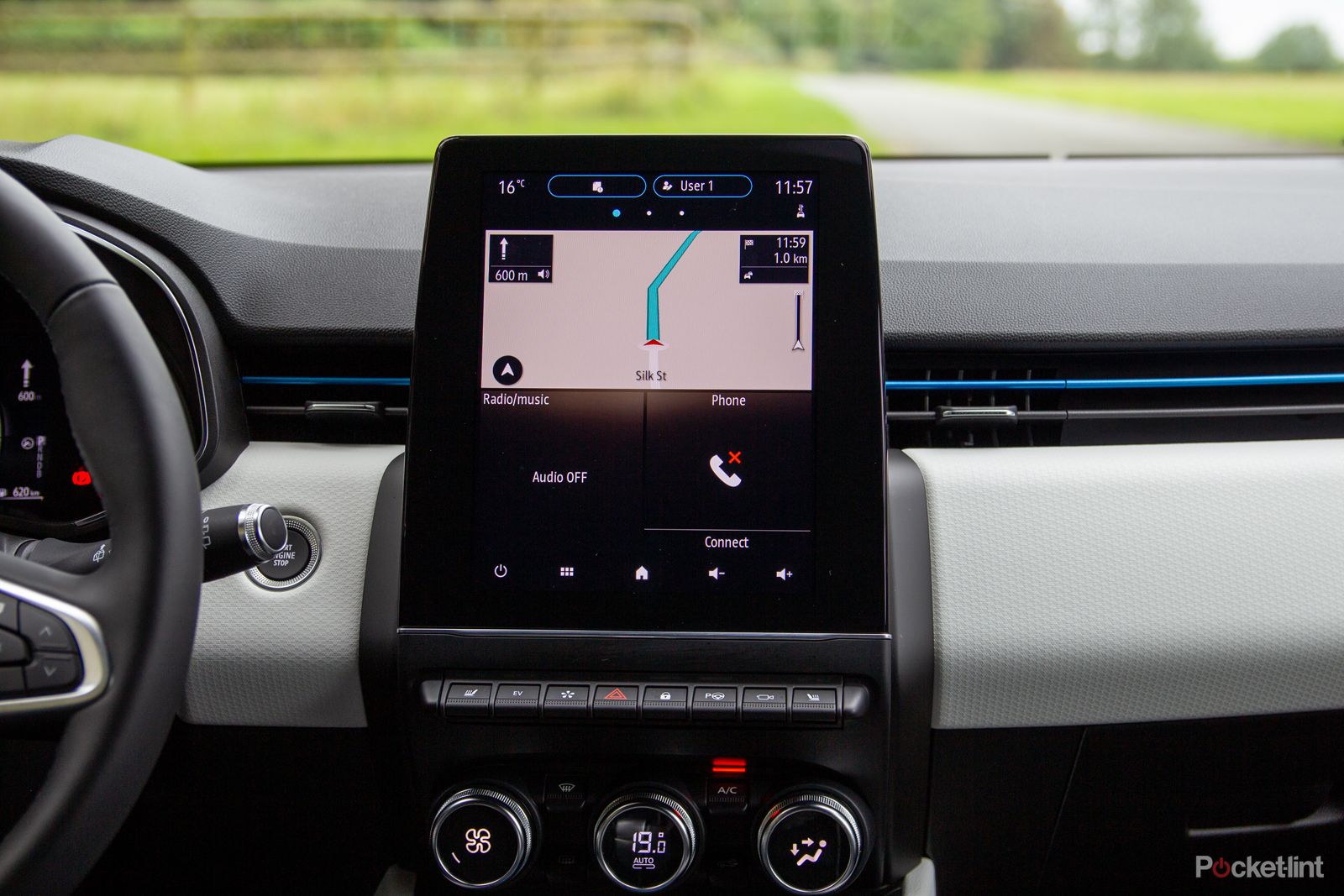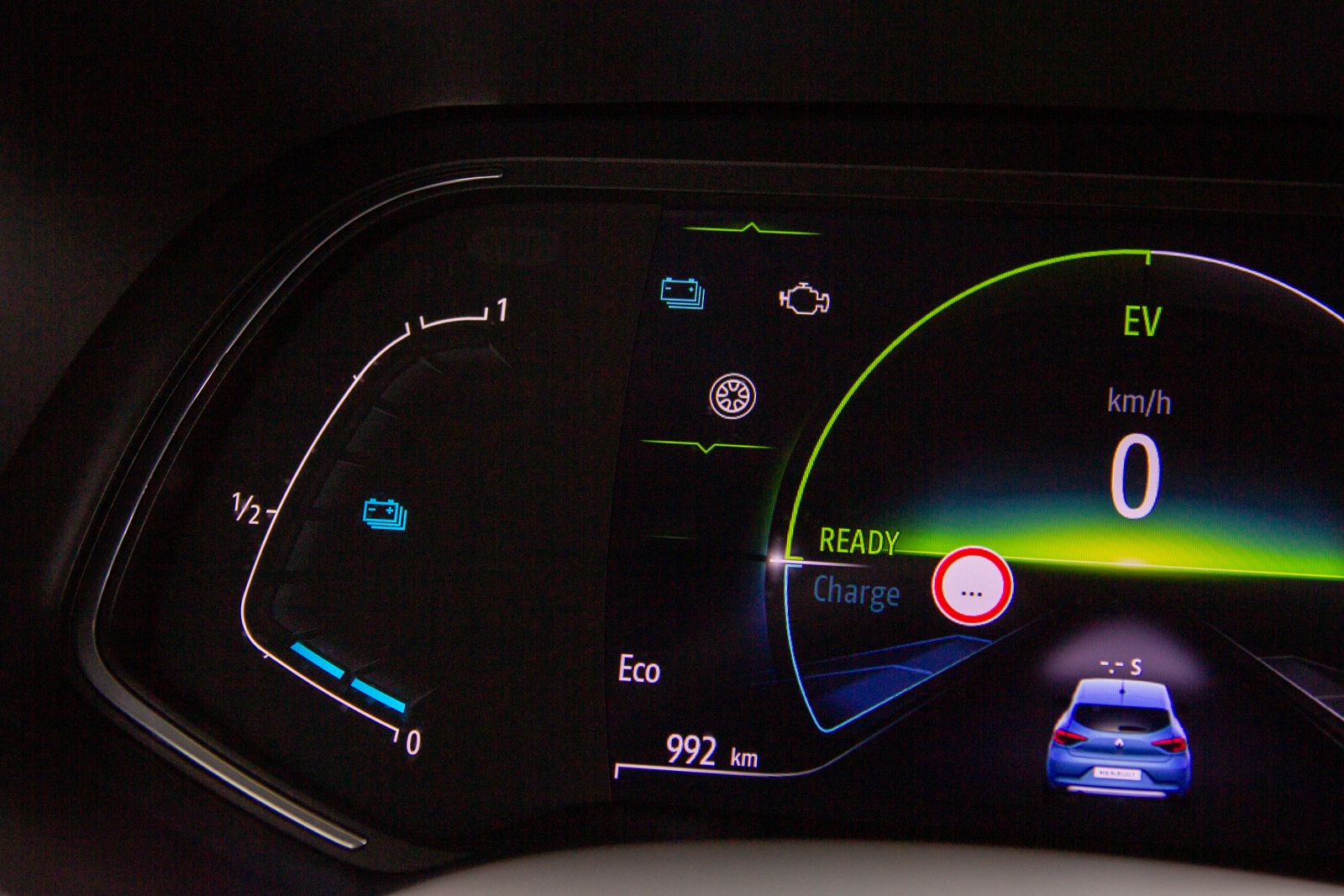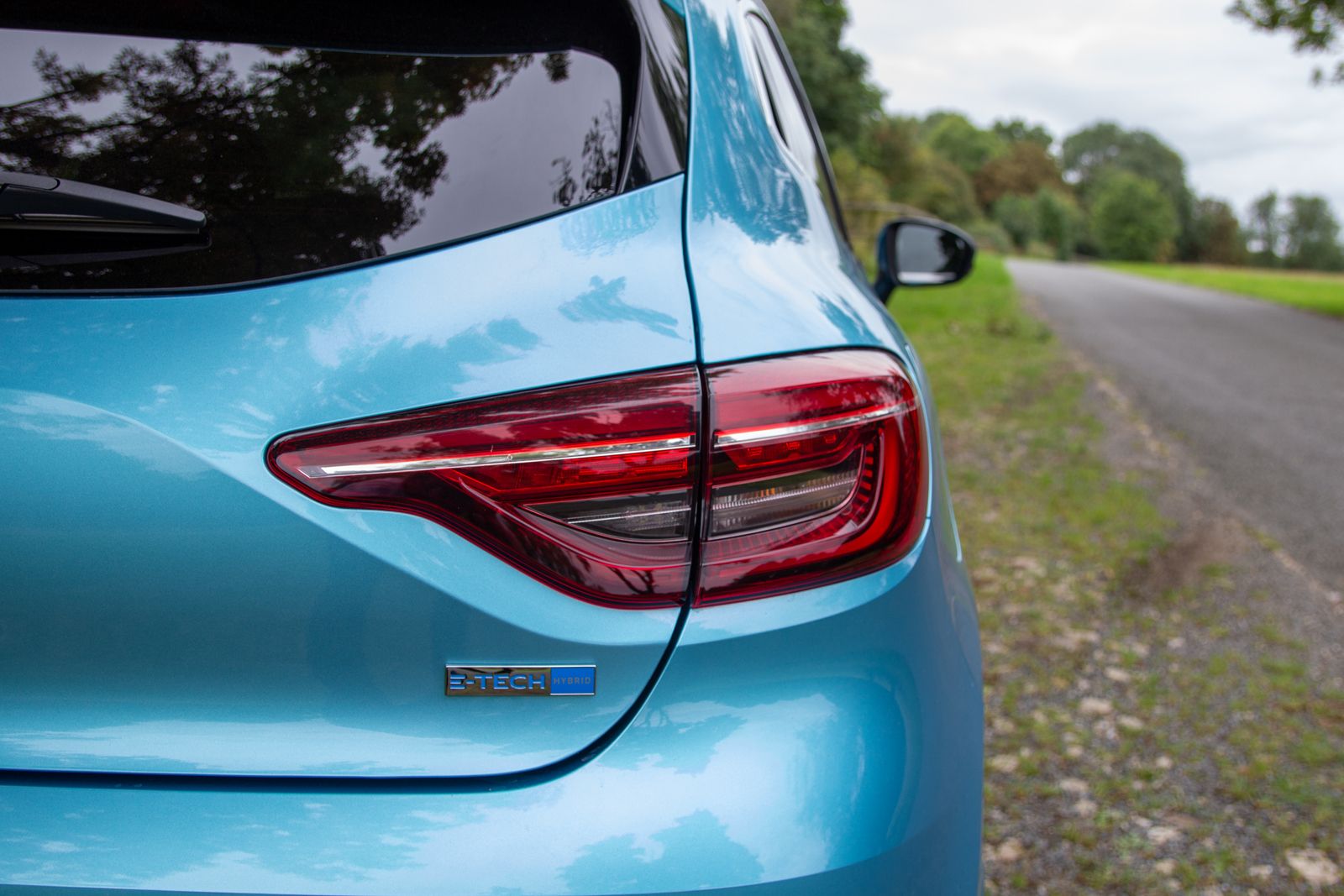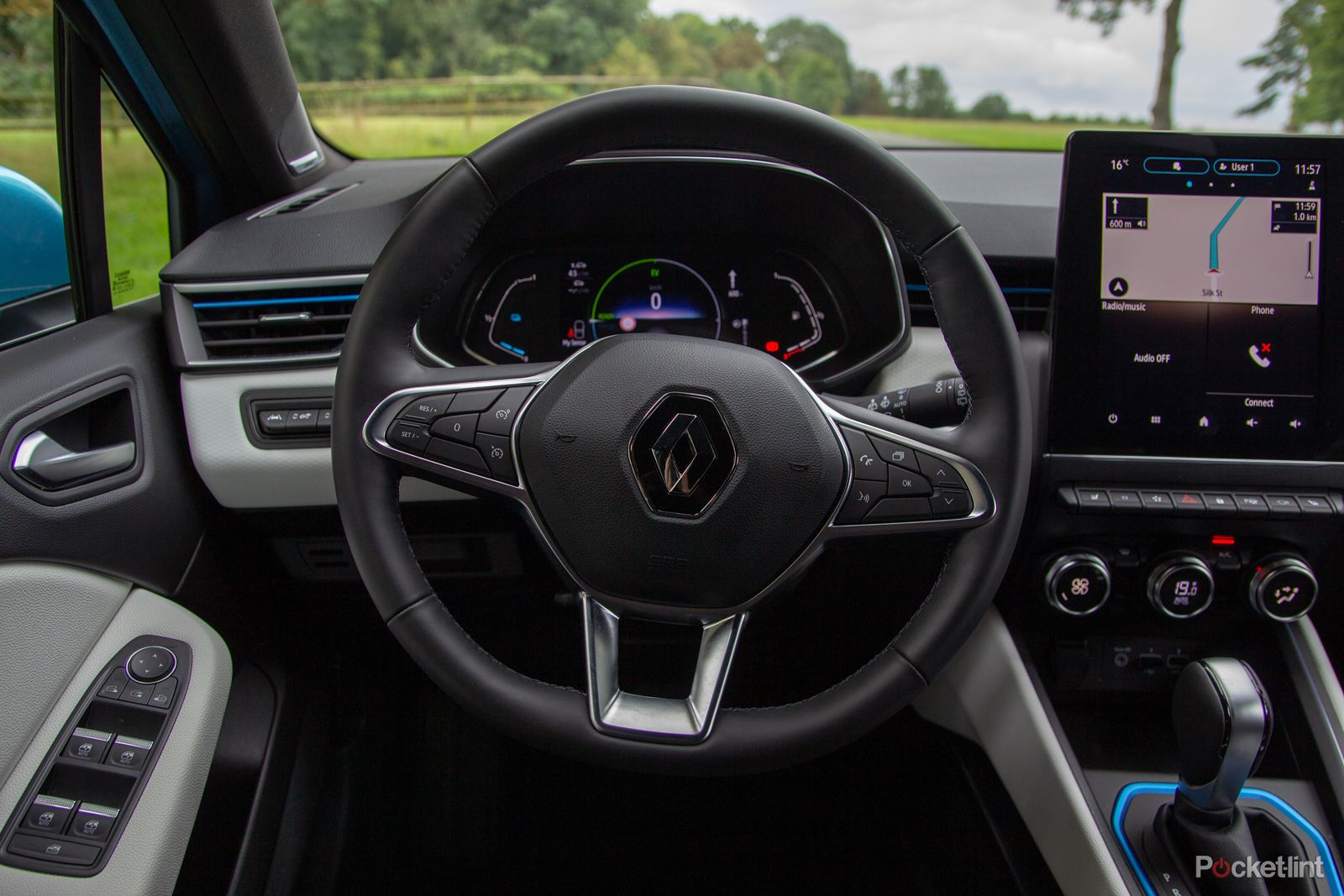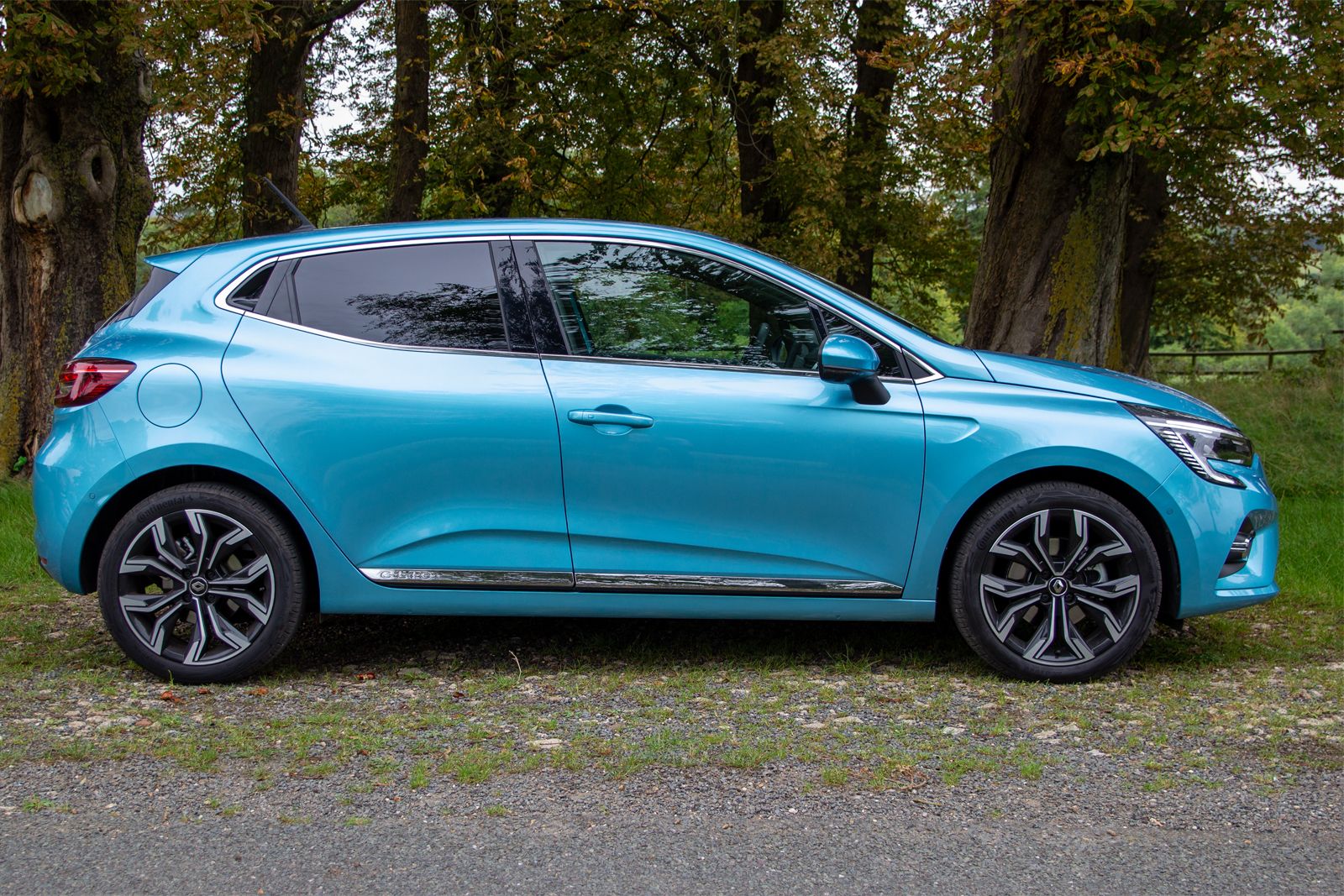The Clio burst onto the scene in 1990 and over the past 30 years has gone on to be one of the best-selling cars in Europe. That's still true of 2020, where has continued to be the best-selling car in its class through the early part of the year.
That's now less to do with Nicole and Papa and more to do with the fifth-generation redesign that appeared in late 2019, that now, in this form, gets its full hybrid makeover. It's still compact, it's still flirtatious, but in true 2020 style, it's now a little greener.
Our quick take
There aren't a huge number of hybrid hatches on the road, with many driving into larger segments and that adds to the Clio's appeal. It's a successful formula that will benefit those who find themselves doing a reasonable amount of stop-start driving. There's a cost too, and that cost at the time of writing is just under a £1000 premium for taking the E-Tech Hybrid over the TCe 130 on the same trim, not a prohibitive difference in the grand scheme of things.
What the Hybrid offers is slightly greener credentials in a car that's generally very good and that's going to make it a slightly easier decision for those looking to buy at this level. The E-Tech Hybrid can also be sedate and boring to drive if you want it to be - and that hybrid appeal should also suit those who want efficiency in town driving and something a little more interesting when the roads open up.
For us it's a great combination, and while the Clio can't make any great claims about electric motoring, it still has a lot of a the small car personality that the Clio has always been known for, wrapped up in a great package.
It is, we feel, what Nicole would have wanted.

Renault Clio E-Tech Hybrid - 4.5 / 5
| FOR | AGAINST |
|---|---|
|
|
Re-designed from the ground up
The Renault Clio is all-new, but that doesn't mean that it's completely different. When you see this little hatch coming over the horizon, you'll know that it's the Renault Clio. It's a good looking car too, the big changes being a redesign about the lighting to fit in with the rest of the Renault family.
It looks well proportioned and it is, but it's not a huge change from Clio IV, the previous version. What the "all new" part really refers to is the platform it's sitting on. For the geeks, that's CMF-B, the modular platform shared with Nissan under cars like the Nissan Juke.
Why is this boring talk relevant? Because moving to this platform was designed to open the door to cars like this E-Tech Hybrid. It's all about being able to efficiently package in an electric motor and battery without cutting into the interior space and destroying the car.
With that in mind, the "all new" message makes a lot more sense for this version of the car than it did for the combustion (ICE) versions that are already on the road. The motor sits behind the engine - in fact there's two motors, but more on that later - while the battery sits over the rear axle. Yes, that's great for weight distribution.
You're left with a boot that's pretty respectable at 300-litres - and the rear seats still fold the same as they do in the ICE version. The biggest criticism we'd have is that there's a hefty lip to get into the boot, so if you're lifting in something heavy, it's going to be a bit more of a struggle.
It's all about the interior redesign
Moving inside, the Renault Clio boosts quality with softer touch materials. It's a nicer cabin than previous Clios, but there's one thing to note for those interested in the E-Tech Hybrid: it is starting at S Edition trim initially (with a nice Launch Edition version too), and those wanting the cheaper Play or Iconic trim will have to wait.
The version we drove was French spec, left-hand drive, but equivalent to the S Edition in the UK. There are some parts we really like about the cabin, like the textures and materials that Renault has chosen at this level. There's a nice contrasty white textured soft touch panel running across the dash pictured here. We don't know if that's coming to the UK, but we like it. Keeping it clean might be another matter.
The seats are comfortable, and while they aren't leather at this level, they are nicely sculpted to keep you sitting in place while darting round corners, something the Clio is pretty adept at.
The rear seats don't get the luxury of so much space. That's not uncommon for a supermini and if your front seats aren't too far back it's comfortable enough, with ample headroom even for an adult over 6 foot. Slide those front seats back a little and knee space is the real problem, but if you're packing a couple of tweens into the back they should be fine.
Visibility is generally great, with plenty of adjustment in the seat to give you a sit up and beg view or to slouch a little lower - it's only really the wide C pillar (where the backdoor meets the boot) that can block those glances into the blind spot, but it's really not a huge issue.
Overall, it's a nice interior. There are superior materials in cars like the Audi A1, but there's a refreshing sense of departure from the A1 and Polo, giving the Clio a little more character.
A compelling tech story
The great thing about S Edition trim is the big central display, very similar to the display you'll find in the Renault Zoe, and running the same infotainment system which in truth is actually very good.
It measures 9.3-inches, sitting in portrait like an iPad strapped to the front of the car. Pretty much everything takes place through touch, but Renault has retained physical buttons for some key options. One of these is the EV button to engage electric mode, the other is the MySense button to enter the driving modes.
The satnav is powered by Google search and integrates TomTom traffic, while there are USB connections meaning you can have Android Auto or Apple CarPlay via Renault's Easy-Link system. However we like Renault's default satnav system: as we said of the Zoe, it offers clear instructions and the big screen makes it really easy to glance and go.
We also had a chance to test the Bose sound system, which is a £350 option, kitting out the car with nine speakers. That gives a good showing for itself and the Bose badging is almost worth the price itself for those who like to turn the music up.
The driver gets a 10-inch digital display, the centre of which is customisable, with the left edge being the battery gauge and the right edge being the fuel gauge. That gives the battery quite a lot of display space considering that it's only really good for 2.5 miles of electric driving. Yeah, more on that in a bit too.
That also leads to a feeling that the Clio E-Tech Hybrid is a little more EV feeling than is actually is, with the driver display allowing customisation to show the flow of energy through the battery. In reality, you're driving under the power of the engine for most of the time, but it's a fun reminder that this car is a little cleaner than its combustion siblings.
There's some customisation of the display, with two segments letting you choose the details you can see via steering wheel controls, while the main, single, central dial can be customised within the MySense controls on the big screen. That also allows you to change the characteristics of the different driving modes, which we'll move on to now.
On the road
Before we talk about the hybrid setup, let's talk about MySense. This will give you three different options - MySense, Sport and Eco. The names mostly explain what they offer, with MySense be the default "auto" mode, but as we've just said, you can customise some small elements, the most significant of which (to us) is the steering weight.
The steering is light and rather indistinct as standard, but changing it to Sport steering makes the whole thing feel more responsive and direct, leading to a much more positive driving experience.
And Sport really is the driving mode that makes this car come alive. It sharpens the throttle, it hangs onto gears longer to rev higher and it can also use the engine to pump energy back into the battery. Yes, it's a blistering irony, because the whole aim of the E-Tech Hybrid is to offer greener motoring, but this Clio feels like it wants to drive in Sport and throw most of those benefits out of the window.
That alludes to the Clio's character. As those who have read up on the ICE version of this car will have garnered, it's nippy, the sort of car that wants to be driven down perfect winding country roads. Tighter suspension means there's little body roll, while the increased power - 140HP - in the Hybrid means it has a little more clout to it too. It's fun to drive in Sport mode.
But it's really about the smart technology sitting underneath. It's the same system as you'll find in the new Renault Captur with a 1.6-litre normally aspirated engine paired with an automatic clutchless dog gearbox and pair of motors.
The main motor can be driven by the 1.2kWh battery and will give you 2.5 miles of emission free motoring. That's not much and it's only available at up to 37mph. The charge comes from regeneration (from that main motor) or from the engine working as a generator to recharge the battery.
The second motor works in assistance, it handles startup, while also having a stabilising role in the Renault's clutchless gearbox. It's there to make things smoother as you transition from the main motor to the engine and so on - and on the whole it is a smooth experience, delivering the power how and when you expect it.
The whole aim is of hybrids is to reduce emissions and waste and that's what the Clio here offers, as you can put charge back into the battery on braking or lift-off and then use some of that charge to power that motor rather than it all coming from the engine. It's a hybrid in the traditional sense, so there's no option to plug in and no ambitions around any sort of long range electric motoring. Renault's figures suggest you'll get around 64.2mpg with emissions at 98g/km and that's pretty close to other small hybrids like the Toyota Yaris, while bettering ICE versions of the Clio.
As for performance, the 0-62mph time of 9.9 seconds isn't going to break any records, but the setup is responsive enough. There might be some times when it feels like you're waiting to change up to get a bigger burst of speed from a new gear and with no manual control over gearing, you just have to let the car do its thing.
You get both a D and B driving option, the B here being more focused on regeneration and boosting that effect when you lift off. That enables one-pedal driving to a degree (although it won't come to complete halt) and if you're looking to maximise the hybrid effect, then driving in B in stop start conditions and sticking to the Eco mode will make for the most efficient result overall.
To recap
While the Clio can't make any great claims about electric motoring, it still has a lot of the small car personality that the Clio has always been known for, while knocking down emissions with its clever hybrid system. There aren't a lot of small hybrid hatches on the road and the premium you're asked to pay is pretty small over the equivalent petrol, making for a winning formula.

